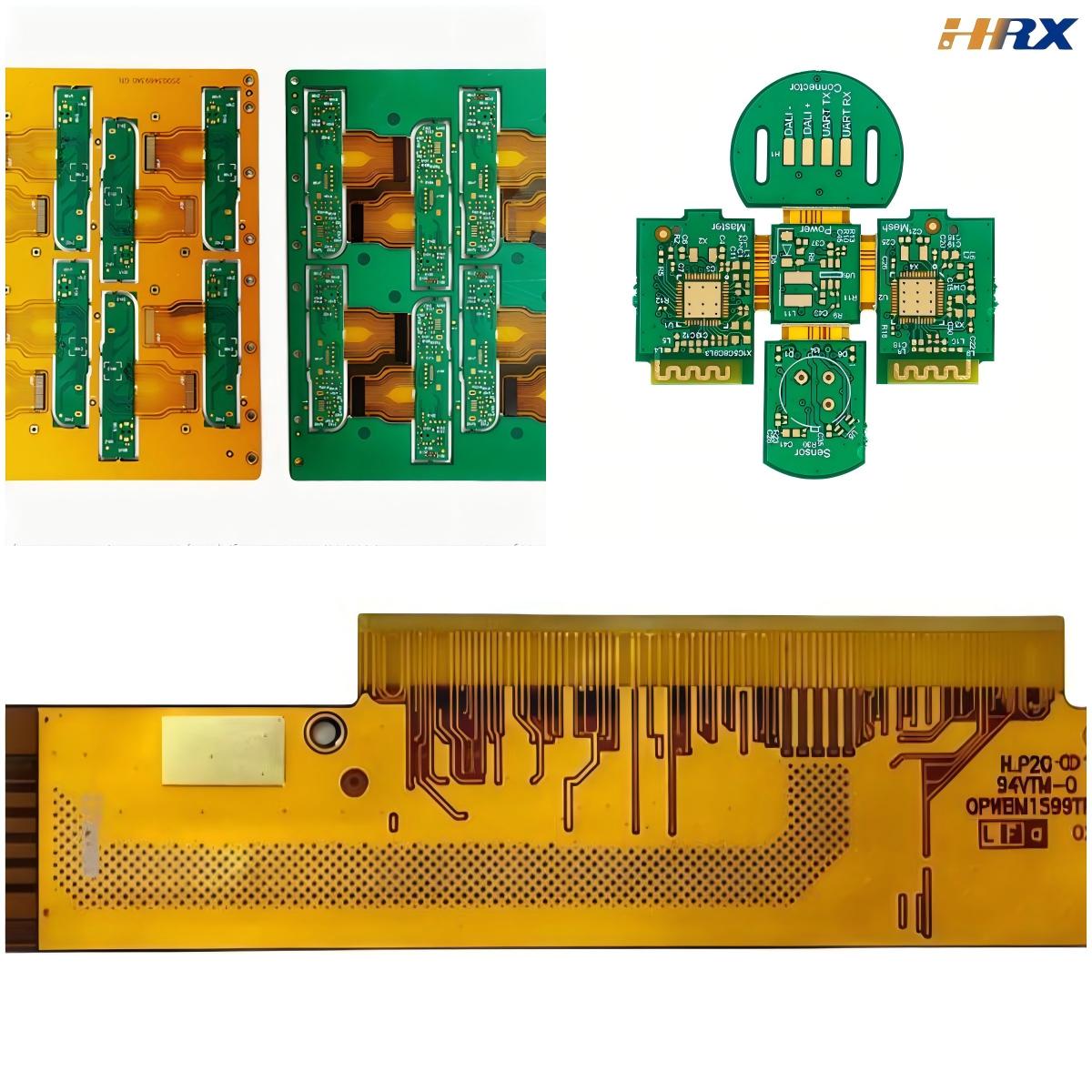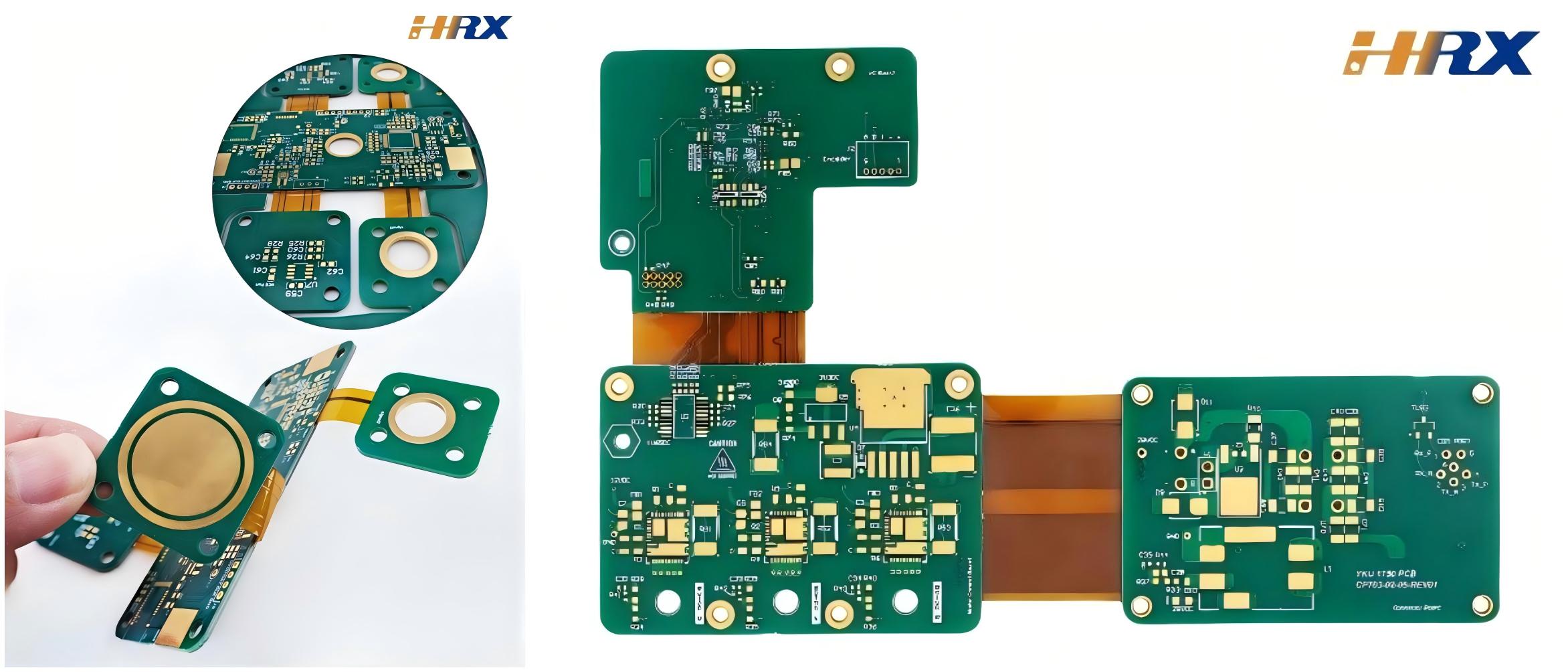Search
The Role of FPC in the Development of Electric Vehicles
- Apr 29,2025
-
Share
In the rapidly evolving landscape of electric vehicles (EVs), Flexible Printed Circuits (FPCs) have emerged as a linchpin for innovation and efficiency. As Shenzhen Huaruixin Electronics Co., Ltd., a leading ODM/OEM manufacturer specializing in FPC, PCB, and Rigid-Flex Printed Boards, we are at the forefront of this technological revolution, leveraging our expertise to drive the advancement of EV technology.

The Crucial Role of FPC in EVs
Battery Management System (BMS)
The Battery Management System (BMS) is the nerve center of an EV's battery system, and FPCs play an indispensable role in its functionality. In modern B
MS dsigns, FPCs are increasingly replacing traditional wiring harnesses, offering significant advantages in terms of cost, space, and performance.
One of the key benefits of using FPCs in BMS is their ability to mitigate mechanical stress. By eliminating the need for bulky and rigid wiring, FPCs reduce the risk of friction on the battery pack's top cover, a common issue with traditional harnesses. This not only improves the durability of the battery system but also enhances overall system reliability.
From a manufacturing perspective, FPCs enable greater integration and miniaturization. Integrating chips onto FPCs for motherboard and slave board circuits maximizes product stability while reducing the overall footprint. This is particularly important in EV battery packs, where space is at a premium. The FPC sampling for the acquisition line in the BMS system, which monitors the voltage and temperature of power battery cells, simplifies the module integration process. Automated welding for the connection between FPC and the battery busbar further streamlines production, reducing labor costs significantly. Even when automated welding is not feasible, traditional screw-locking methods with FPCs require less labor input compared to traditional wiring harnesses.
Power Control System
In the power control system of EVs, FPCs are essential for achieving high-performance operation. Their high wiring assembly density allows for the integration of complex electronic systems in limited spaces, enabling more compact and efficient power control units. This not only improves the overall performance of the vehicle but also contributes to weight reduction, a critical factor in enhancing the driving range.
For instance, in high-power inverters that convert DC power from the battery to AC power for the electric motor, FPCs are used to connect various components. Their flexibility enables better routing of wires within the inverter, which is crucial for efficient heat dissipation and reliable operation. By optimizing the layout and connection of components, FPCs help to minimize electrical losses and improve the overall efficiency of the power control system.
Other Applications
FPCs find extensive applications in various other components of EVs. In vehicle lighting systems, their flexibility enables the design of innovative and energy-efficient lighting fixtures. Door control systems benefit from FPCs' ability to provide reliable connections in a small space, enhancing the functionality and durability of these systems. Camera modules, which are integral to driver-assistance systems, rely on FPCs to transmit high-speed data signals with minimal interference. With an average of over 100 FPC applications per EV, these circuits are truly the unsung heroes of modern electric vehicles.
Design and Production Experience
Design Considerations
When designing FPCs for EV applications, several critical factors come into play. Thermal management is of paramount importance, given the high heat generated by EV components. We utilize high-quality materials with excellent thermal conductivity, such as polyimide-based substrates, to ensure that the FPCs can withstand high temperatures without compromising performance.
Reliability is another key consideration. Given the harsh operating conditions of EVs, including vibrations, temperature variations, and humidity, FPCs must exhibit exceptional mechanical and electrical reliability. To ensure this, we subject our designs to rigorous testing, including vibration tests, thermal cycling tests, and environmental stress tests, during the design phase.
Miniaturization and high-density integration are also key design goals. As EV manufacturers strive to pack more functionality into a smaller space, our FPC designs aim to achieve the highest possible wiring density while maintaining signal integrity. Advanced design techniques, such as blind vias and buried vias, are employed to optimize the layout and reduce the overall size of the FPCs.
Production Process
Precision is the cornerstone of our FPC production process. We utilize state-of-the-art manufacturing techniques, including laser-based etching and drilling, to ensure the highest level of accuracy and consistency. Automated assembly lines are employed to streamline production, ensuring consistent quality and high production efficiency.
For example, in the assembly of FPCs with battery busbars, we use robotic arms for precise placement and connection. Quality control is an integral part of our production process. Automated Optical Inspection (AOI) systems are used to detect any manufacturing defects, such as open circuits, short circuits, or misaligned components. Electrical testing is also performed on each FPC to ensure that it meets the strict performance requirements of EV applications.
Key Factors to Note
Material Selection
Material selection is a critical aspect of FPC design for EVs. The base material, such as the flexible copper-clad laminate, should have high-temperature resistance, excellent electrical insulation properties, and mechanical flexibility. Polyimide-based materials are often preferred due to their superior thermal stability and mechanical strength.
The conductive materials used, such as copper, need to have high conductivity to minimize power losses. Additionally, materials used for soldering and bonding should be able to withstand the thermal and mechanical stresses in an EV environment. We work closely with our material suppliers to source the highest quality materials that meet the specific requirements of each application.
Compatibility with EV Systems
FPCs must be fully compatible with other EV systems, both electrically and mechanically. Electrical compatibility ensures that the FPC's electrical characteristics, such as impedance and signal transmission speed, match those of the connected components. This is crucial for maintaining the integrity of the electrical signals and ensuring the proper operation of the system.
Mechanical compatibility is equally important. The FPC's shape, size, and mounting methods need to be designed to fit seamlessly into the vehicle's structure. In battery packs, for example, the FPCs should be designed to fit around the battery cells and other components without causing any interference.
Cost-effectiveness
While ensuring high-quality performance, cost-effectiveness is also a key consideration. As the EV market continues to grow, manufacturers are constantly looking for ways to reduce costs without sacrificing quality. We strive to optimize our design and production processes to offer cost-effective FPC solutions.
This may involve using cost-efficient materials without compromising performance, improving production efficiency to reduce labor costs, and streamlining the supply chain to lower overall costs. By leveraging our scale and expertise, we are able to offer competitive pricing without sacrificing the quality and reliability of our products.
We invite industry peers, partners, and enthusiasts to join us in exploring the endless possibilities of FPCs in the EV industry. Whether you are looking for innovative solutions, seeking to share your experiences, or simply interested in learning more, we welcome your insights and collaboration. Together, we can drive the future of electric vehicle technology forward.

Let’s talk! We’ll provide the perfect solution for you!
-
 Huaruixin Electronics mainly produces printed circuit boards as the core business, to provide customers with one-stop solutions for FPC/PCB production, components sourcing and Assembly.
Huaruixin Electronics mainly produces printed circuit boards as the core business, to provide customers with one-stop solutions for FPC/PCB production, components sourcing and Assembly. - WHAT WE DO — PCB Design Solutions — Flex PCB Production — Components Sourcing — FPC&PCB Assembly
- PRODUCTS — Single Sided Flexible Circuits — Double Sided Flexible Circuits — Multilayer Flexible Cirucits — Rigid-Flex Circuits — FPC Assembly — PCB Assembly
- CAPABILITY — FPC Capability — Rigid-Flex Capability — PCB Capability — Assembly Capability
- Copyright © 2024 Shenzhen Huaruixin Electronics Co., Ltd. All Rights Reserved.
- Design By BONTOP


